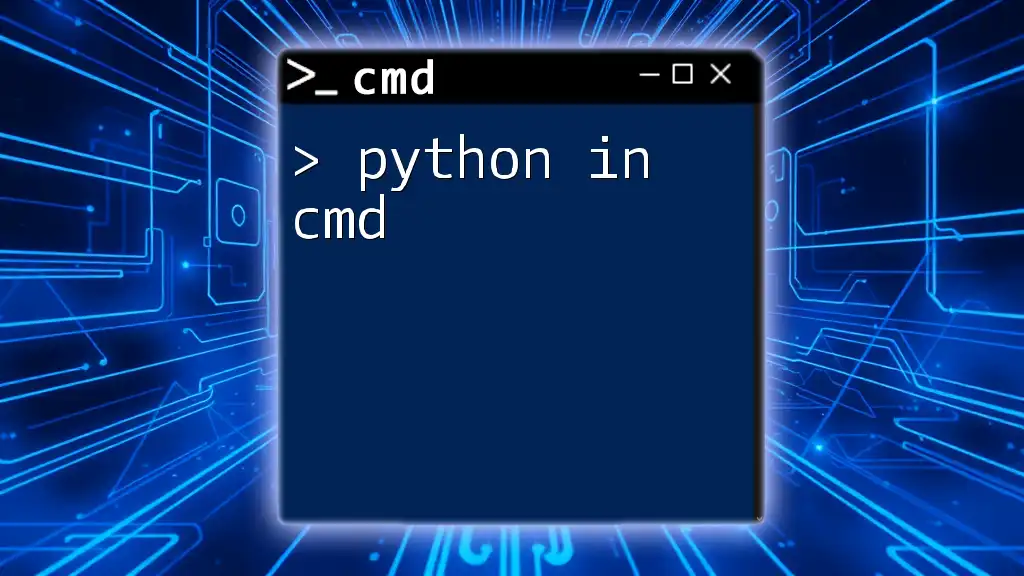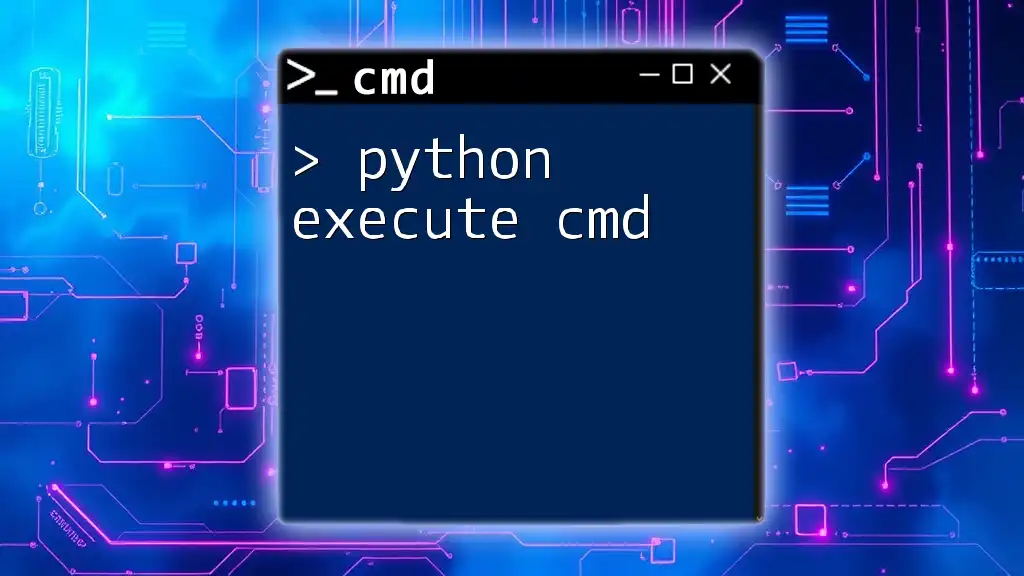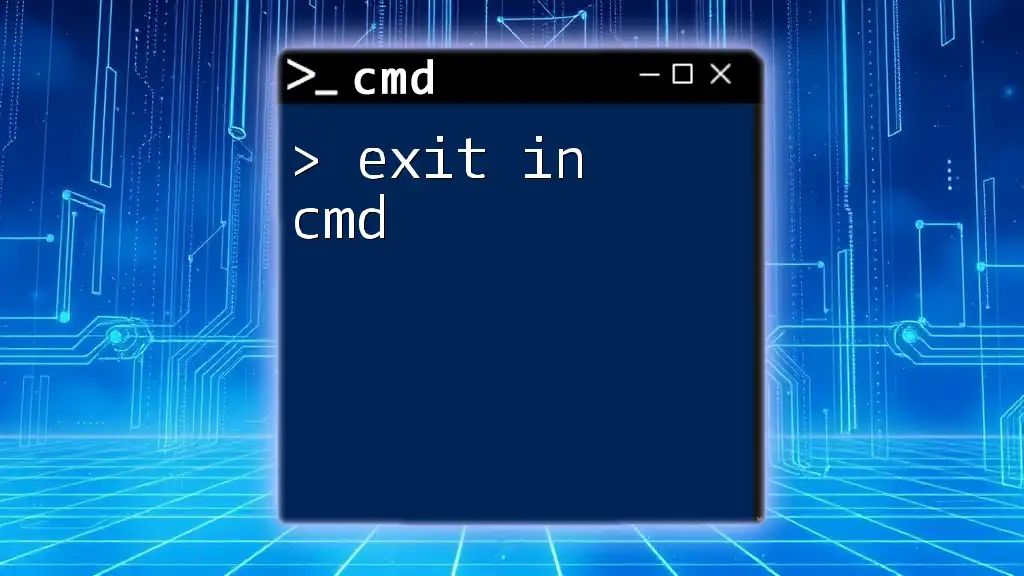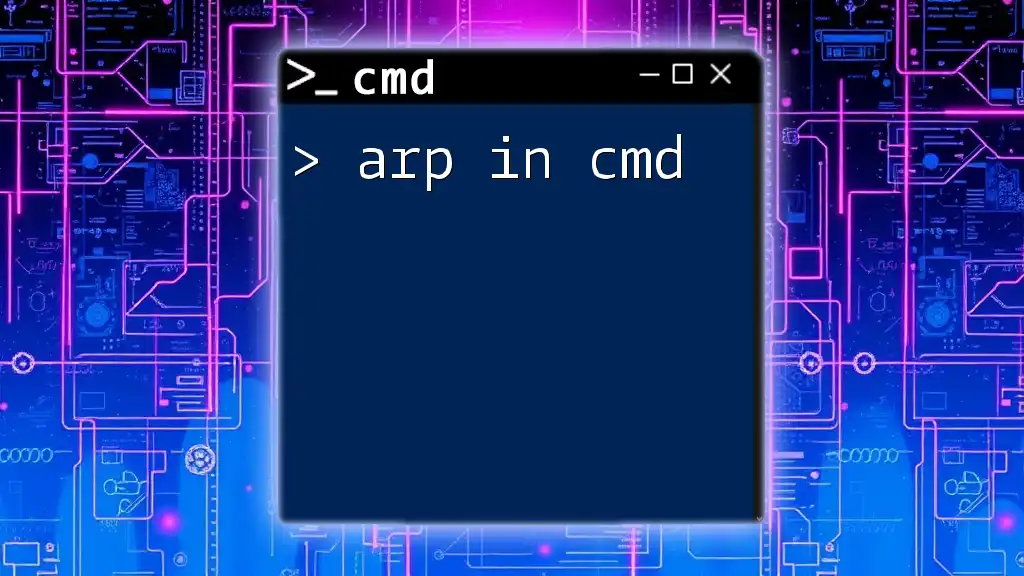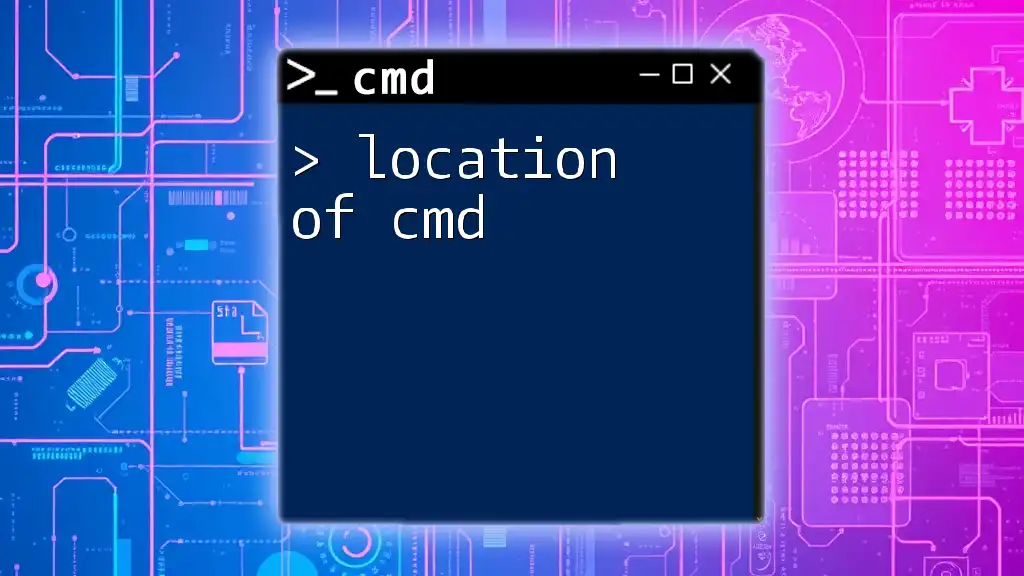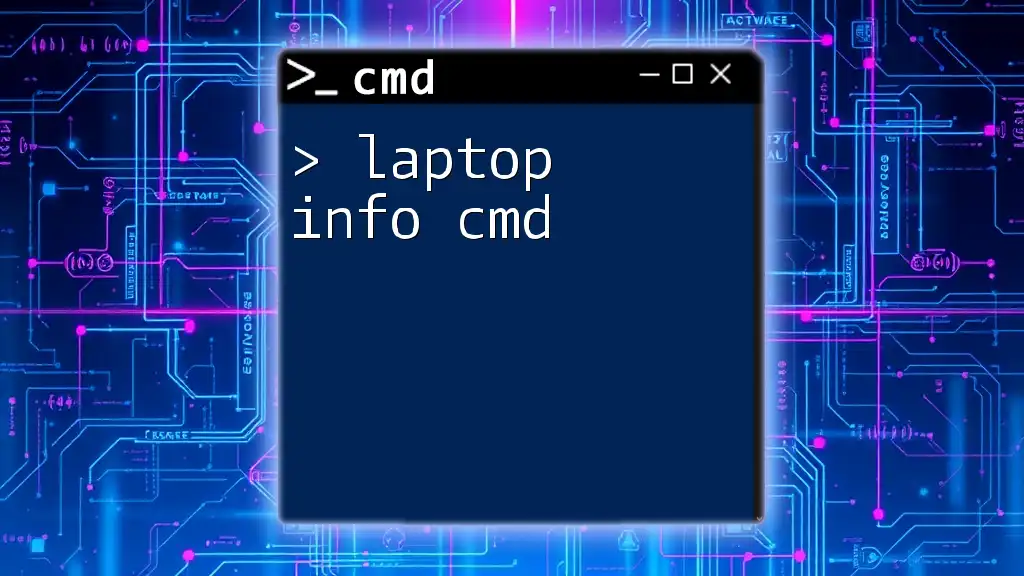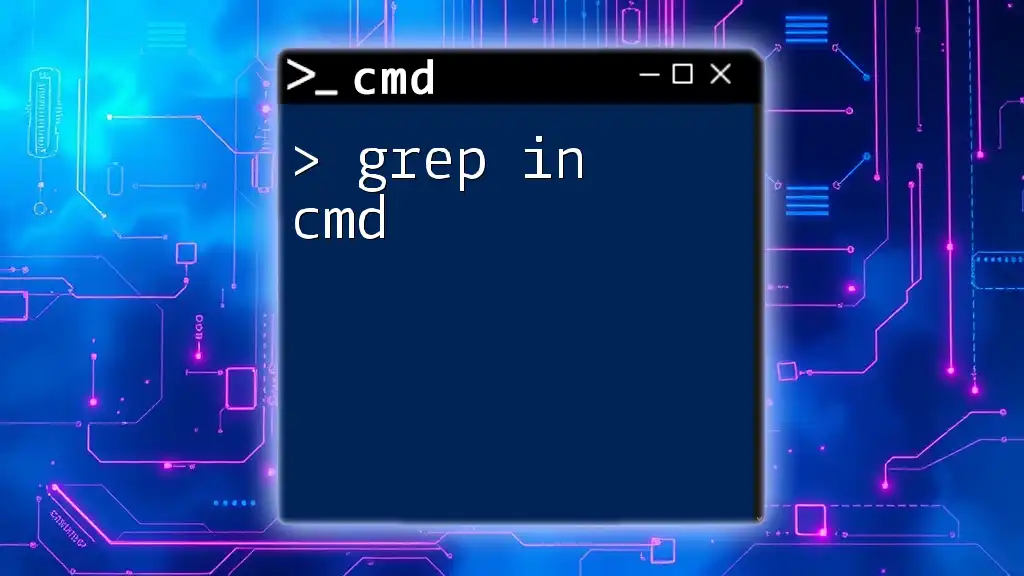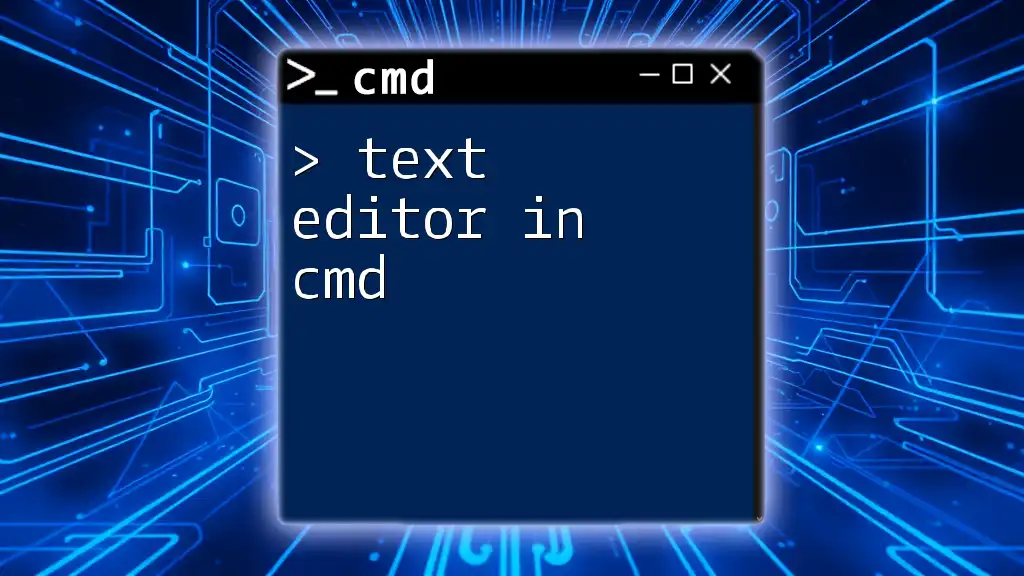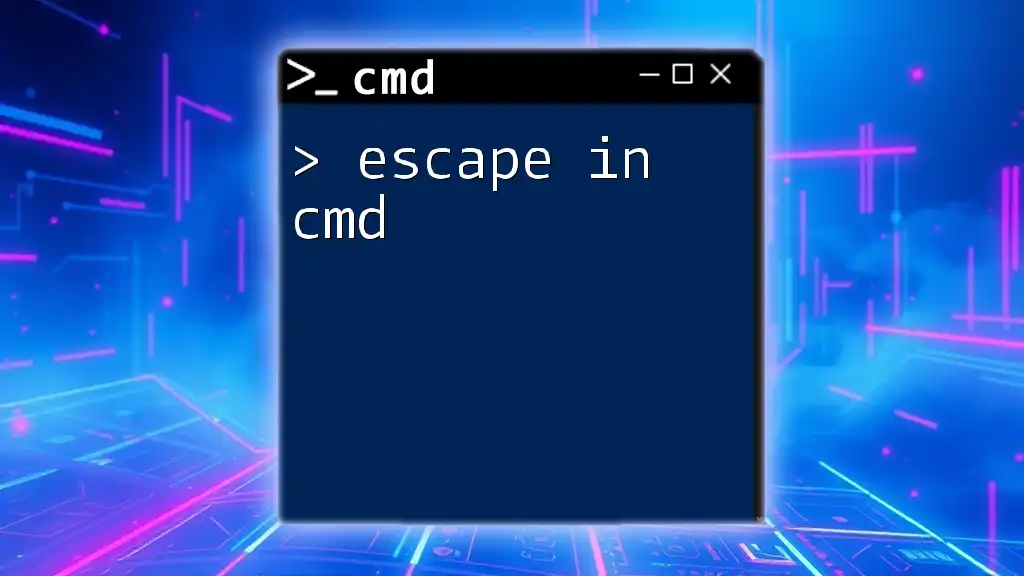You can run Python scripts directly from the Command Prompt (cmd) by using the `python` command followed by the script's filename.
python my_script.py
Getting Started with Python in CMD
Installing Python
To begin using Python in CMD, you first need to ensure that Python is installed on your system. Here’s a step-by-step guide:
-
Download Python from the official Python website (python.org). Choose the version that is appropriate for your operating system.
-
During installation, make sure to check the box that says “Add Python to PATH”. This will allow you to run Python commands from CMD.
-
After installation, verify that Python is correctly installed. Open CMD and enter the following command:
python --versionThis command will display the currently installed version of Python. If you see an error, double-check your installation and PATH configuration.
Accessing CMD
To run Python scripts, you need to open CMD. There are several ways to do this:
- Use the search bar on your Windows taskbar: type "cmd" and press Enter.
- Press `Win + R`, type "cmd" in the Run dialog, and press Enter.
Familiarizing yourself with some basic CMD commands is also beneficial. Use the `cd` command to navigate to your desired directory, and `dir` to list the files in that directory.
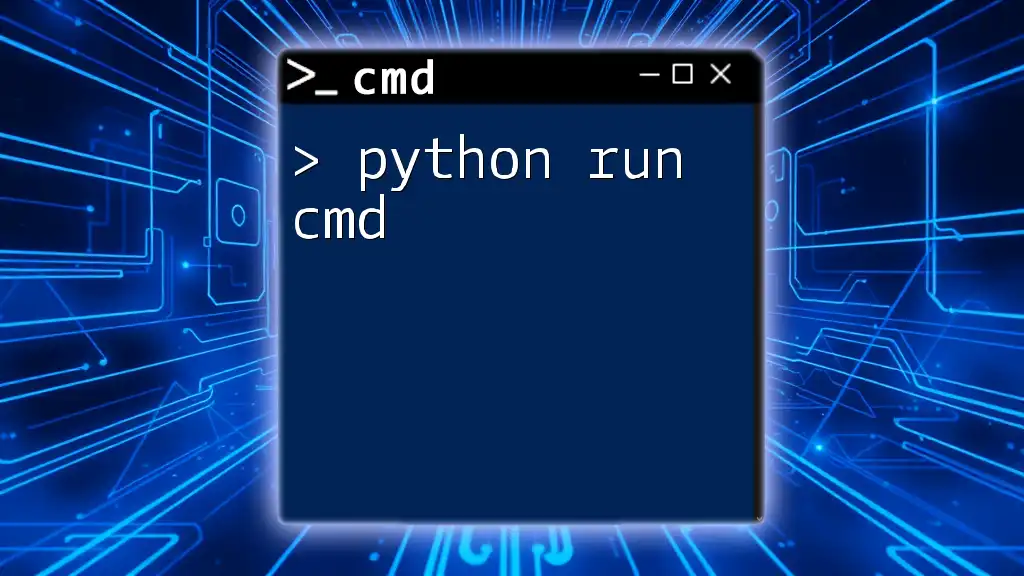
Running Python Scripts in CMD
Creating a Python Script
Writing a Python script in CMD can be incredibly straightforward. Open a text editor like Notepad and enter a simple Python program, such as:
print("Hello, World!")
Save this file with a `.py` extension (e.g., `hello.py`). Make sure to note the directory where you save this file, as you'll need to navigate to this location in CMD.
Executing Python Scripts
Once your script is created and saved, you can run it in CMD. Change the directory to where your script is located using the `cd` command. For example:
cd path\to\your\script
Now execute your script with the following command:
python hello.py
If everything is set up correctly, the output will display:
Hello, World!
Over time, you may encounter common execution errors. Understanding error messages will help you troubleshoot issues. A frequent problem is syntax errors, which will typically point you to the exact line in your code where the mistake occurs.
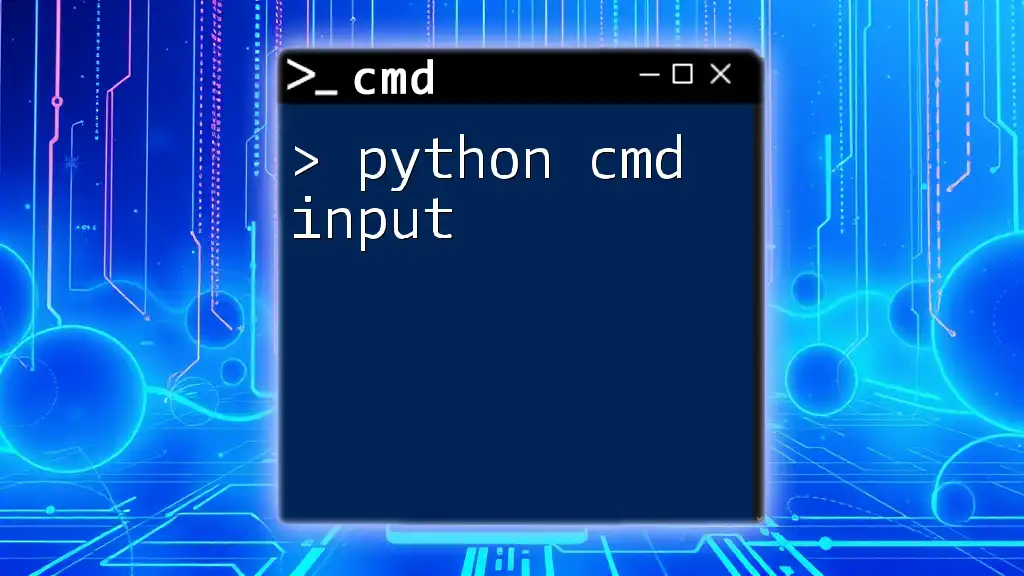
Python Command-Line Arguments
What are Command-Line Arguments?
Command-line arguments allow you to pass information to your Python script when executing it. This can be especially useful for scripts that require user input.
Using Command-Line Arguments in Python
You can access command-line arguments in Python using the `sys` module's `argv` list. Here's an example code snippet that prints provided arguments:
import sys
if len(sys.argv) > 1:
print("Arguments:", sys.argv[1:])
else:
print("No arguments provided.")
To run this script, use the following CMD command:
python your_script.py arg1 arg2
In this case, the output will display `Arguments: ['arg1', 'arg2']`, showcasing how you can pass and access data dynamically.
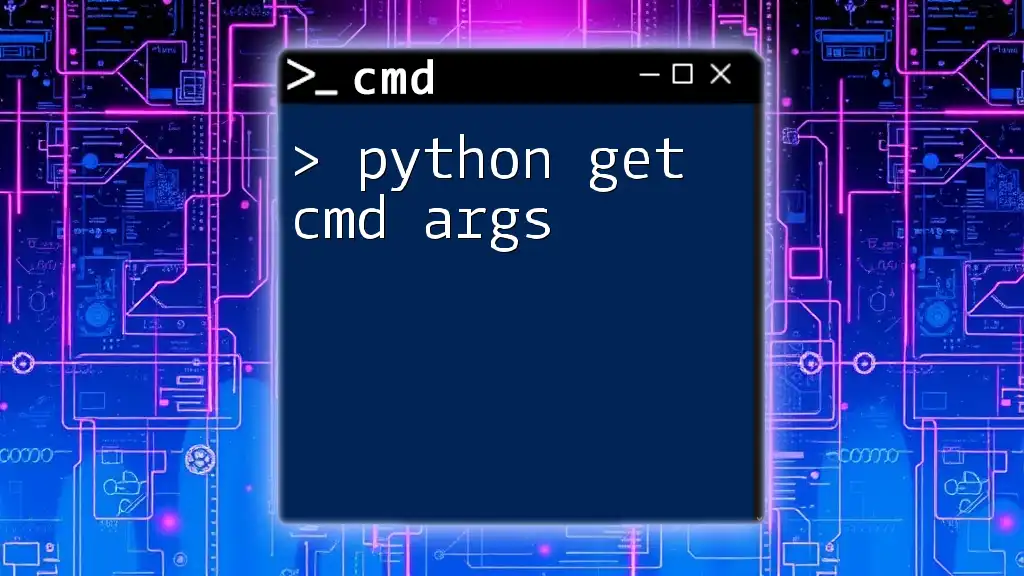
Python Virtual Environments in CMD
Why Use Virtual Environments?
Virtual environments allow you to create isolated spaces for Python projects, ensuring that dependencies do not conflict with each other. This is particularly useful when working on multiple projects with different package requirements.
Creating and Activating a Virtual Environment
To create a virtual environment, you first need to install `virtualenv`. In CMD, run:
pip install virtualenv
Once installed, creating a virtual environment can be done with:
virtualenv myenv
Activate the virtual environment using:
myenv\Scripts\activate
Your CMD prompt will change to indicate that the virtual environment is active. You can now install packages within this environment without affecting other projects.
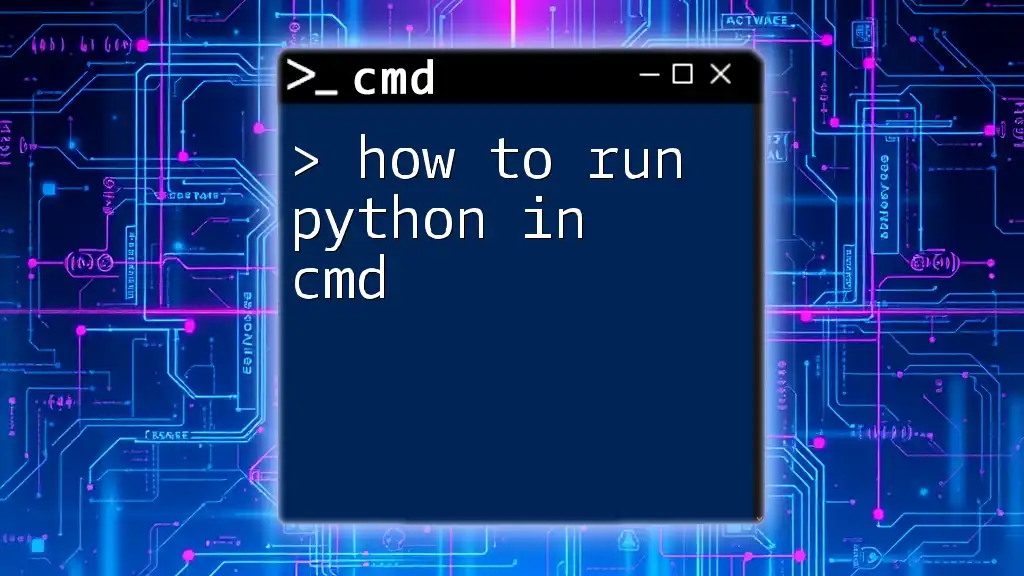
Basic Python Packages and CMD
Installing Packages with `pip`
`pip` is the package installer for Python, allowing you to install additional libraries and frameworks. Using CMD, you can easily install packages:
pip install package_name
For example, to install the popular requests library, simply type:
pip install requests
Checking Installed Packages
To see which packages are currently installed in your environment, run:
pip list
This command will list all available packages along with their versions, allowing you to manage your project dependencies effectively.
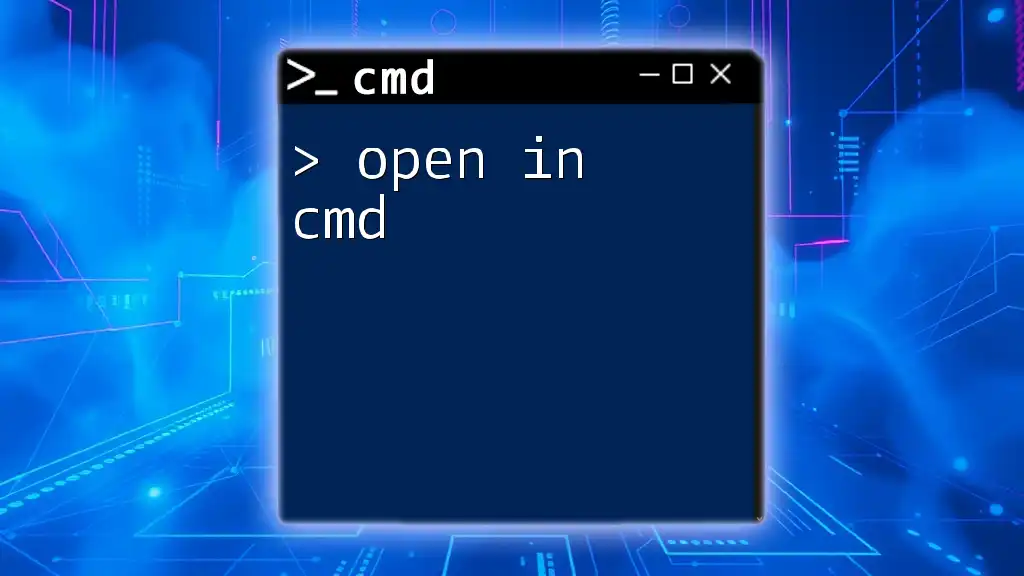
Python Scripts for CMD Automation
What is CMD Automation?
Automation refers to the process of writing scripts that can execute repetitive tasks. Using Python in CMD for automation can save you time and reduce the chance of human error.
Writing Automation Scripts in Python
You can automate various tasks with Python, such as renaming multiple files in a directory. The following script demonstrates how to do this:
import os
for count, filename in enumerate(os.listdir('path_to_directory')):
src = f'path_to_directory/{filename}'
dst = f'path_to_directory/renamed_file_{count}.txt'
os.rename(src, dst)
By modifying the `path_to_directory` with your actual path and executing the script from CMD, it automatically renames all files in that directory sequentially.
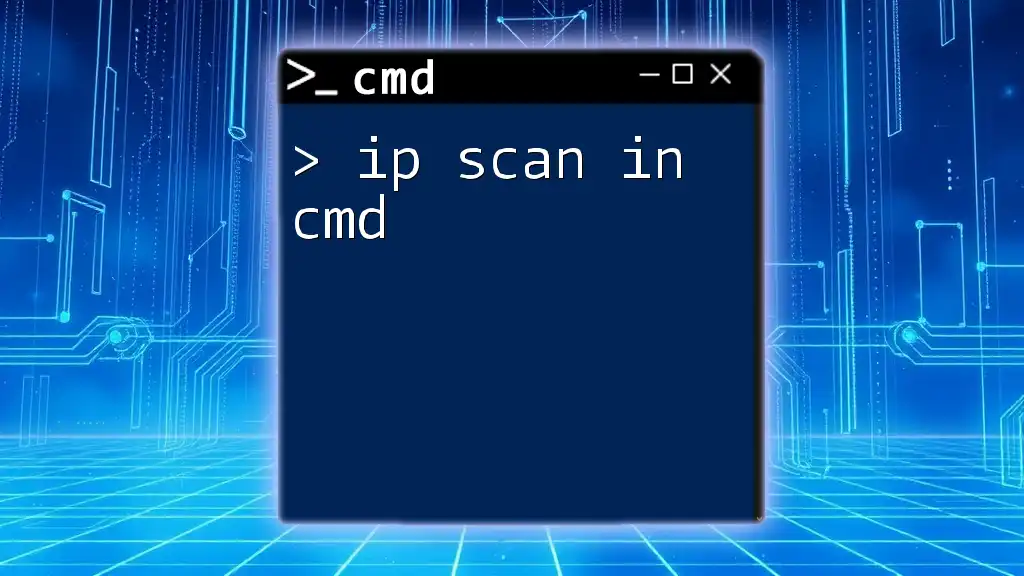
Troubleshooting Common CMD and Python Issues
Common CMD Problems
One of the most frequent issues users encounter is when CMD fails to recognize Python commands. This is often due to Python not being added to the system's PATH. To solve this, revisit your Python installation settings and ensure that the "Add Python to PATH" option is checked.
Python-Specific Issues
Syntax errors can be tricky, as they occur when the Python interpreter finds invalid syntax in your code. Always carefully check your code for typos or misplaced symbols. Runtime errors, on the other hand, occur while the script is running, such as dividing by zero. Handle these gracefully using exceptions.
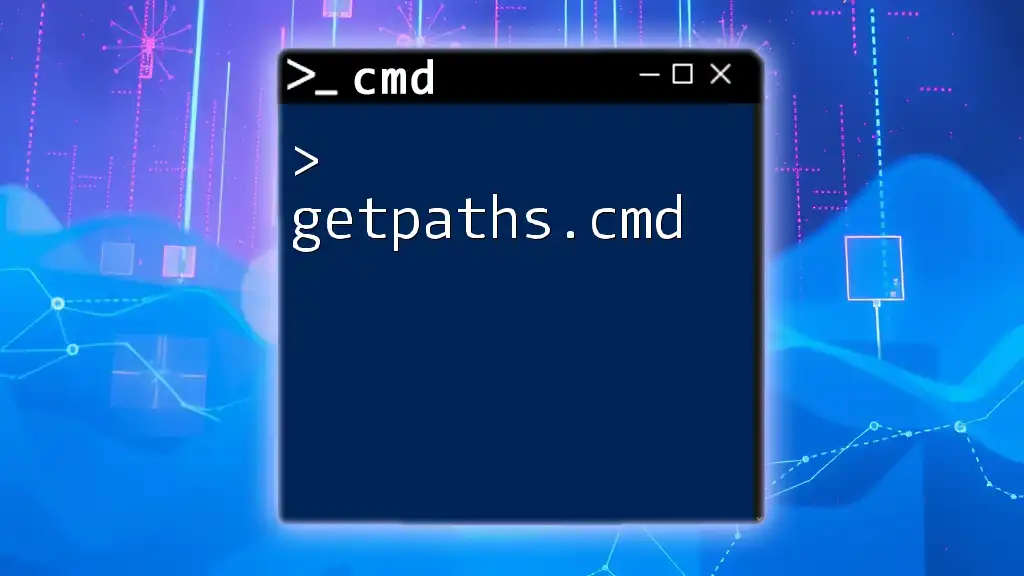
Conclusion
Exploring Python in CMD opens up a world of possibilities for automating tasks and programming more efficiently. From executing simple scripts to managing dependencies and virtual environments, mastering these fundamentals will set a solid foundation for your journey in Python programming. Be proactive—dive deeper into more advanced topics and continue honing your skills!

Resources
Useful Links
For further learning, you can explore:
- The official [Python Documentation](https://docs.python.org/3/)
- Extensive CMD resources available online
- Engage with communities and forums dedicated to Python programming
Suggested Further Reading
Consider reading books, blogs, or watching video tutorials to enhance your grasp of using Python in CMD effectively. Exploring these resources can lead to discovering more advanced techniques and best practices in Python programming.

